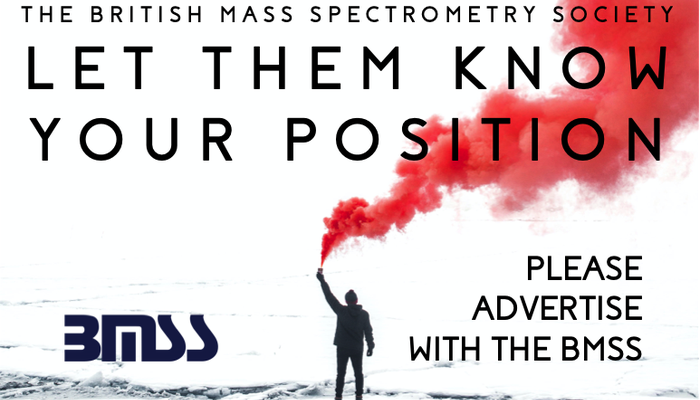EFASIG2019 report
EFASIG2019 Meeting, July 17, 2019 - Report to BMSS
The EFASIG2019 meeting was held at Manchester Metropolitan University in the John Dalton Building on Wednesday, July 17, 2019. The local organiser was Dr David Megson, Department of Natural Science, with external assistance from Dr Peter Baugh, EFASIG Leader and Prof. Chris Smith. The BMSS meeting secretary, Dr Mark McDowall, produced flyers and logos for the meeting and organized the advertising of the meeting on the BMSS website page and on-line registration, abstract submission and exhibitor booking (in conjunction with Dr Jackie Mosely). Lisa Sage, BMSS Admin., liaised with the organizers to provide updates on registration and exhibitor booking and produced the final delegate list.
The meeting was designed to focus on several themes including environmental forensics, non-targeted analysis and aspects of environmental and food analysis. Because of the breadth of the topics submitted, the themes were threaded through the am & pm sessions rather than being session focused.
The meeting opened with a Keynote from Dr Steve Mudge, Norwegian Institute for Air Research, and Chair of the International Network of Environmental Forensics (INEF) with a presentation on, Defining chemical signatures - is more always better? A case for and against was presented.
Session 1A featured food contamination from plastic packaging, delivered by Dr Robert Bradshaw, Sheffield Hallam, using Imaging MS, which crossed the boundary between analytical forensics and contamination of food through migration of plasticizers. Scott Campbell. SpectralWorks, presented a topical talk on Automated comparison of Coffee Samples by GC-MS using AnalyzerPro®, which focused on sampling of beans selected from four countries worldwide to illustrate the utilization of custom software.
Session 1B highlighted the threaded themes on forensic analysis, compound identification and non-targeted analysis in three talks. Atmospheric Pressure Chemical Ionisation Gas Chromatography for Compound Identification was described by Rhys Jones, Waters Corporation. Dr Caroline Gauchotte-Lindsay, University of Glasgow, presented a talk on Non-targeted analysis of organic contaminants in complex environmental matrices: from sampling to data integration. Dr Sean Coomber, University of Plymouth, presented an environmentally oriented talk on Source tracking of active pharmaceutical ingredients in a highly polluted river using direct aqueous injection - high performance liquid chromatography (HPLC) tandem mass spectrometry (MS/MS).
Session 2A commenced with Keynote 2 presented by Dr Leon Peters, University of Birmingham, now an associate, entitled Multi Residue High Resolution Accurate Mass (HRAM) Methods for the determination of Ultra-Trace level GC Amenable Environmental Contaminants: Temporal Relationships Revealed in Dated UK Freshwater Sediment Cores. Dr Peters was described as a future emerging leader by David Megson, which is an interesting description and comparable to Early Career Researchers who have featured in previous meetings of EFASIG primarily aimed at the ECR group.
Session 2A presentations featured food & environmental analysis and non-target analysis. Dr Bob Galvin, Bruker Daltonics, presented Combination of targeted and non-targeted workflows for the identification of pollutants in river water using passive sampling method, which described an environmental project using a chemcatcher absorption facility to frequency monitor the levels of pollutants in a river system, in conjunction with Natural Resources Wales. Dr Ashley Sage, Sciex, highlighted the application of Robust and sensitive method for direct analysis of polar pesticides in food and environmental samples by LC-MS/MS, which as always was very appropriate to EFASIG topics. Alan Griffiths, Leco UK, in very appropriate physical & environmental science attire, reviewed Utilising GCxGC to Increase Analyte Identification and Confidence in Non-Target Analysis, which continues to be a highly topical technique for diagnostic analysis.
Session 2B presentations highlighted environmental analysis including custom software, automation and specialist mass spectrometric techniques. Neville Llewellyn, Thermofisher Scientific, discussed developments in The role of the Orbitrap and Triple-Quad in Quantitative and Qualitative environmental and food analysis: Overview of solutions EU Water Framework Directive (WFD); Forensic data-mining using Compound Discoverer; and rapid semi/quantitative analysis using PaperSpray. Dr Mark Barrow, University of Warwick, introduced a software technique with a highly sophisticated processing capability in a talk entitled, KairosMS: Processing of hyphenated ultrahigh resolution mass spectrometry data. Dr Kathy Ridgway, Anatune, highlighted a development in sample extraction, in Dispersive liquid-liquid microextraction (DiLLME) for both target and non-target analysis for Food and Environmental matrices. Prof. Mike Burrell, Sheffield University, reviewed a project in collaboration with Advion, Mobile Mass Spectrometry - A Comparison of Lab and Field Based Results. Dr Raymond Wong, Shimadzu, demonstrated that SFC remains a chromatographic technique for special applications in his talk on the Determination of pyrrolizidine alkaloids in plant material using SFC-MS/MS. Dai Games would have been particularly pleased, as he was highly active in development and applications of SFC coupled to MS.
There were several poster presenters, including Jane Cooper, Thermofisher, Dr Joanne Roberts, Glasgow Caledonian University, Daniel Niebsch, MMU, and Peter Baugh, EFASIG, which highlighted a select group of topics.
The meeting definitely had a close-knit community feel with the delegate/presenter/exhibitor groups comprising 13 Universities, 9 vendors as exhibitors and a wide range of companies and organizations not exhibiting being represented. All the presentations were of extremely high quality, excellently informative and very varied for which the speakers are to be complimented. Furthermore, the MS high tech, organizations and service companies, whether exhibiting and/or presenting, contributed 50% to the presentations for which the organisers are extremely grateful. It was appreciated that without this strong support the meeting would have been more difficult to arrange.
Prepared by Peter J Baugh
On behalf of the Organisers

